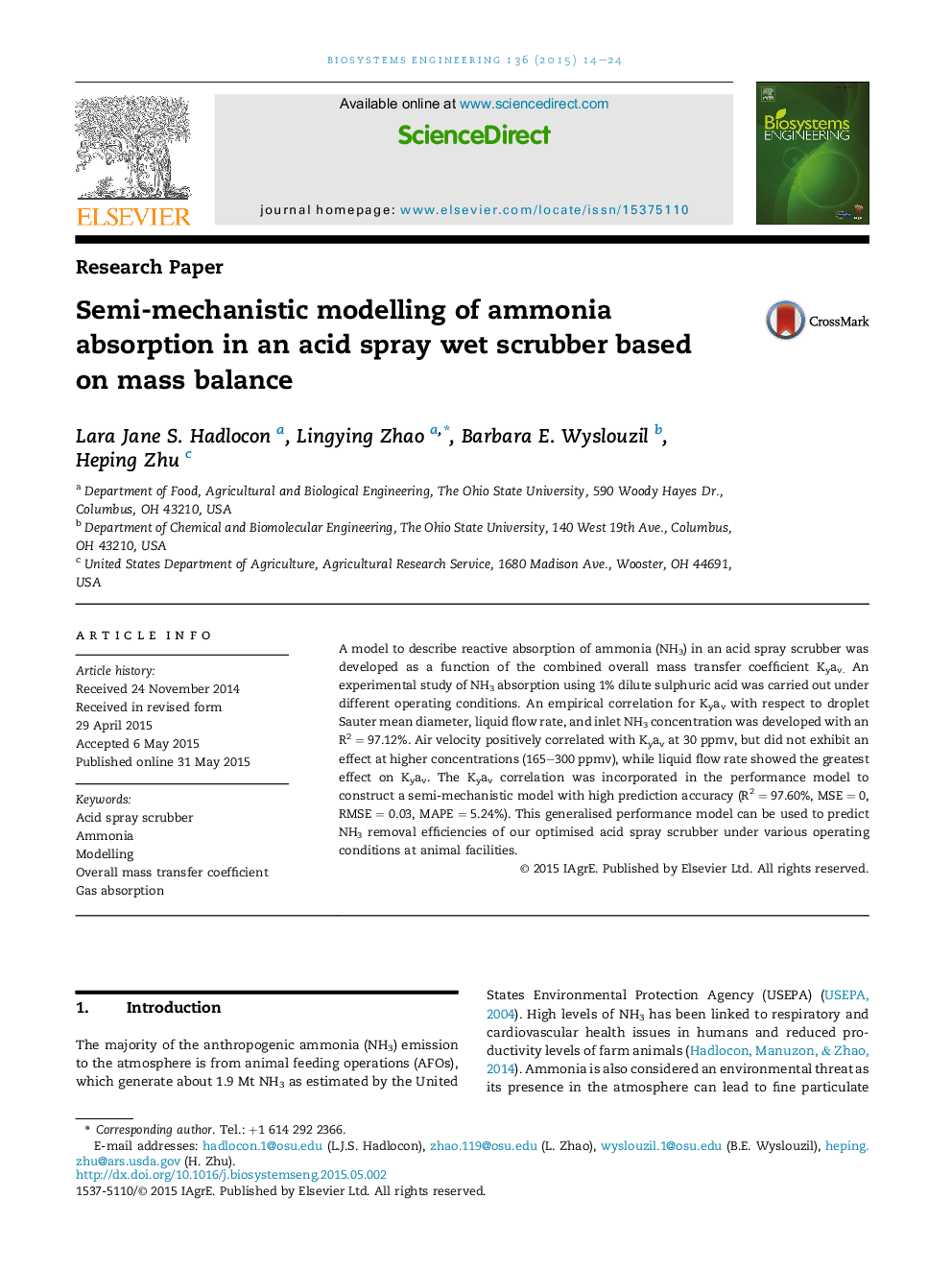| Article ID | Journal | Published Year | Pages | File Type |
|---|---|---|---|---|
| 1711013 | Biosystems Engineering | 2015 | 11 Pages |
•A model for reactive absorption of ammonia in acid spray scrubber was developed.•An empirical correlation for mass transfer coefficient Kyav was constructed.•Droplet size, liquid flow rate, and ammonia concentration notably affect Kyav.•A semi-mechanistic performance model as a function of Kyav was constructed.•The resulting model can be used to predict acid spray scrubber performance.
A model to describe reactive absorption of ammonia (NH3) in an acid spray scrubber was developed as a function of the combined overall mass transfer coefficient Kyav. An experimental study of NH3 absorption using 1% dilute sulphuric acid was carried out under different operating conditions. An empirical correlation for Kyav with respect to droplet Sauter mean diameter, liquid flow rate, and inlet NH3 concentration was developed with an R2 = 97.12%. Air velocity positively correlated with Kyav at 30 ppmv, but did not exhibit an effect at higher concentrations (165–300 ppmv), while liquid flow rate showed the greatest effect on Kyav. The Kyav correlation was incorporated in the performance model to construct a semi-mechanistic model with high prediction accuracy (R2 = 97.60%, MSE = 0, RMSE = 0.03, MAPE = 5.24%). This generalised performance model can be used to predict NH3 removal efficiencies of our optimised acid spray scrubber under various operating conditions at animal facilities.
